Some of my favourite offshore oil rig images are below but I’ve modified them a bit so hopefully they look a little bit more arty. I think these would make wonderful corporate gifts printed out large for offices and meeting rooms.
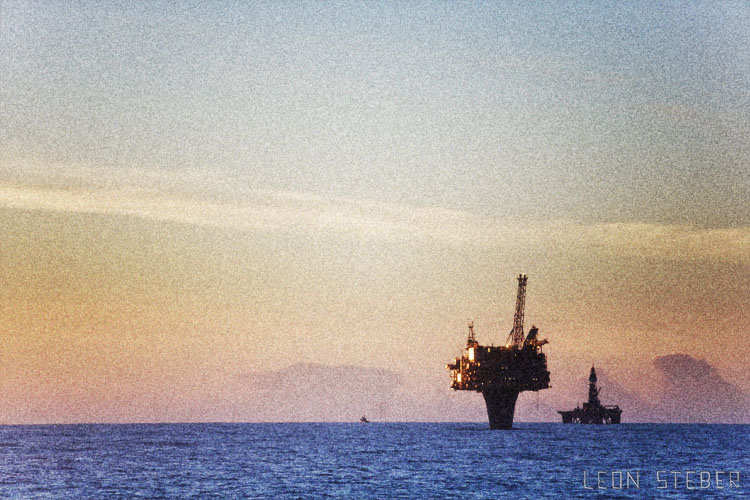
Draugen oil rig, photo taken from the M/V Geofjord. Draugen is an oil field in the Norwegian Sea at a sea depth of 250 metres. The field has been developed with a concrete fixed facility and integrated topside. Stabilised oil is stored in tanks in the base of the facility. Two pipelines transport the oil from the facility to a floating loading buoy. This oil rig stock photo was taken from the M/V Geofjord. Originally owned and operated by DOF Subsea, the Geofjord is now owned by Jas Marine in Malaysia.
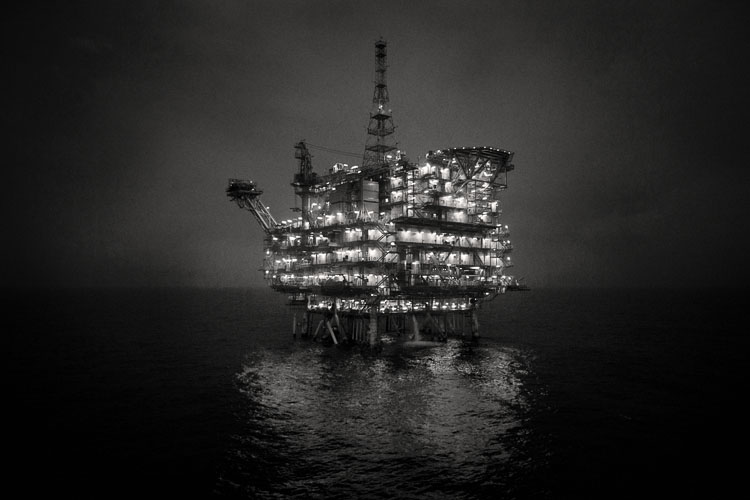
Mexilhão gas field is the largest undeveloped gas accumulation in the Brazilian Continental Shelf. The gas field lies in the Santos Basin in Brazil off the coast of Sao Paulo, approximately 160km offshore and in water depths of between 320m and 550m. Mexilhao has reserves estimated at 72 billion cubic meters of gas. The offshore gas field is wholly owned and operated by Petrobras. The Mexilhão 1 platform is installed in a water depth of 172m is the largest offshore metallic structure ever erected in Brazilian waters. The platform stands 230m tall. This stock photo of the oil rig was taken from the Skandi Achiever, a DOF owned diving support vessel.

BP Valhall oil field is in the Norwegian sector of the North Sea located in 70 metres of water. It was discovered in 1975 with production beginning in 1982 and expected to continue until 2050. The Valhall complex consists of five separate bridge-connected steel platforms for quarters, drilling, wellheads, production and water injection. There are also two unmanned flank platforms, one in the south and one in the north, both about 6kms from the oil field centre. BP Valhall Oil processes 168,000 barrels of oil and 350 million cubic feet of gas per day. The platform is 65 meters high. The oil is piped to Teesside in England via a nearby oil rig. The gas is transported directly via Norpipe pipeline to Emden in Germany. This stock oil rig photo was taken from the DOF-owned survey vessel M/V Geosund and shows a gas flare from the Valhall main complex at night.
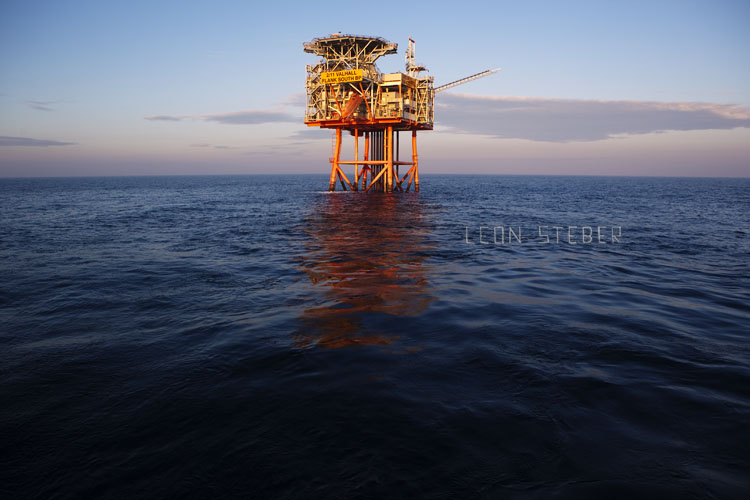
BP Valhall oil field is in the Norwegian sector of the North Sea located in 70 metres of water. It was discovered in 1975 with production beginning in 1982 and expected to continue until 2050. The Valhall complex consists of five separate bridge-connected steel platforms for quarters, drilling, wellheads, production and water injection. There are also two unmanned flank platforms, one in the south and one in the north, both about 6kms from the oil field centre. BP Valhall Oil processes 168,000 barrels of oil and 350 million cubic feet of gas per day. The platform is 65 meters high. The oil is piped to Teesside in England via a nearby oil rig. The gas is transported directly via Norpipe pipeline to Emden in Germany. This stock oil rig photo was taken from the DOF-owned survey vessel M/V Geosund and shows the unmanned South Flank platform at dusk.
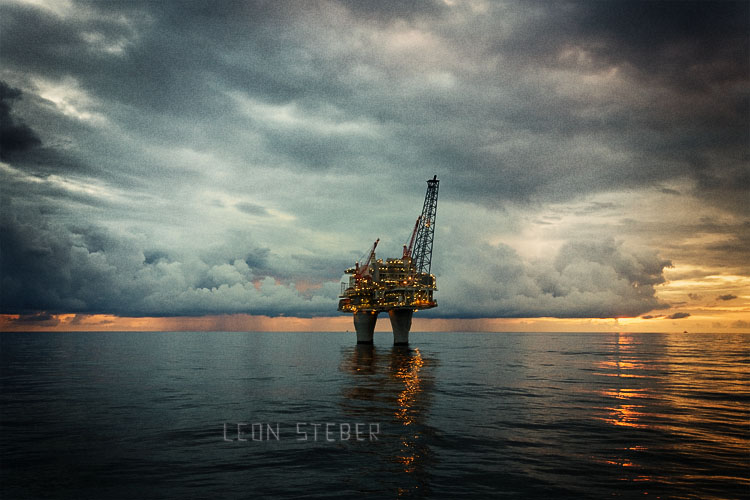
Troll oil and gas field is about 65km west of Bergen in the northern part of the North Sea. It is one of the largest oil fields on the Norwegian continental shelf and is operated by Statoil. Troll A oil and gas platform is the largest structure to ever be moved by humans. It has a total height of 472m and began production in 1996. Troll B platform is a semi-submersible platform fabricated from concrete (probably the only one). Troll C is a conventional steel hull semi-submersible. This stock oil rig photo of the Troll A platform was taken from the M/V Geofjord. Originally owned and operated by DOF Subsea, the Geofjord is now owned by Jas Marine in Malaysia.
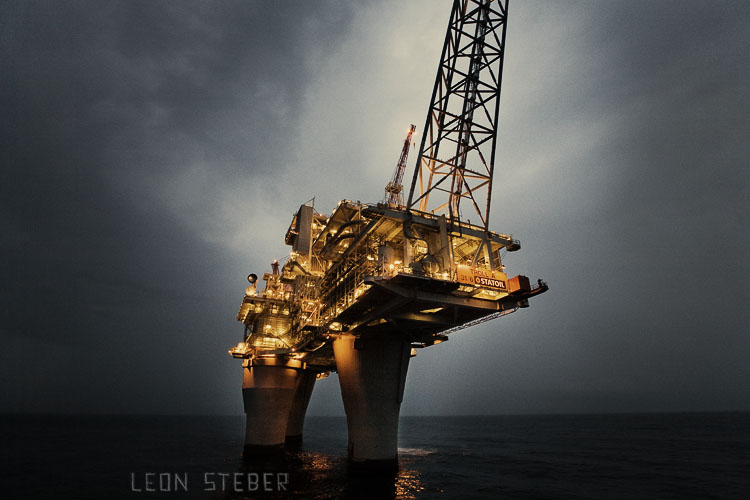
Troll oil and gas field is about 65km west of Bergen in the northern part of the North Sea. It is one of the largest oil fields on the Norwegian continental shelf and is operated by Statoil. Troll A oil and gas platform is the largest structure to ever be moved by humans. It has a total height of 472m and began production in 1996. Troll B platform is a semi-submersible platform fabricated from concrete (probably the only one). Troll C is a conventional steel hull semi-submersible. This stock oil rig photo of the Troll A platform was taken from the M/V Geofjord. Originally owned and operated by DOF Subsea, the Geofjord is now owned by Jas Marine in Malaysia.
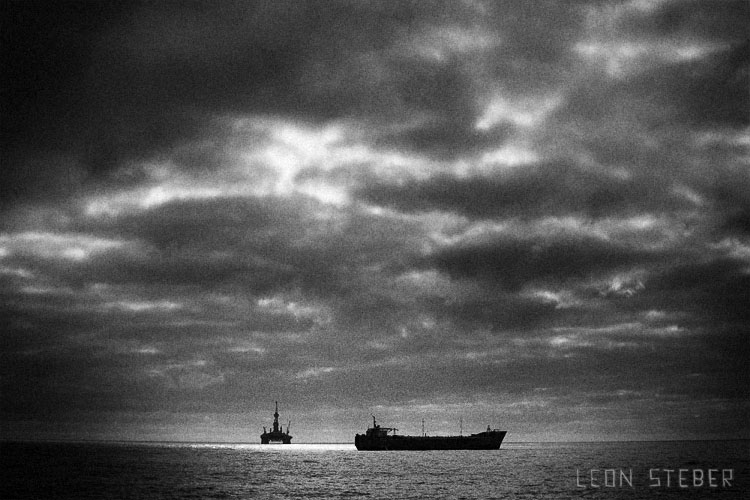
The Njord A oil rig which is a floating steel platform. Njord A platform has an integrated deck with drilling, processing facilities and living quarters. The oil from Njord is transported by pipeline from the platform to the storage vessel Njord Bravo, which is anchored right next to the platform. The oil is then transferred from Njord Bravo to an oil tanker for transportation. This oil rig stock photo was taken from the M/V Geofjord. Originally owned and operated by DOF Subsea, the Geofjord is now owned by Jas Marine in Malaysia.
